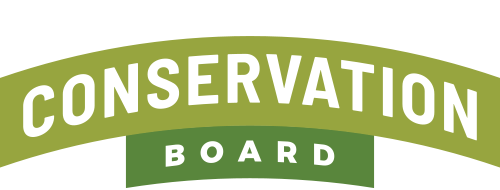Improve Your Wildlife Habitat
Prairie Planting
A prairie is a community of grasses, forbs (wildflowers), shrubs, animals, and microorganisms. It is an important part of our heritage in the Midwest. It has created the beautiful and productive soils that dominate Iowa. The prairie provides wildlife habitat. You may see signs of badgers, butterflies, bobolinks, red fox, opossums, northern harriers, rabbits, raccoons, American toads, leopard frogs, and many nesting birds. Due to their massive root systems, prairies prevent erosion while rebuilding worn out soil. The predominance of perennial plants in the prairie help control weeds. Since less than 0.1% of our prairie heritage remains, it is important to begin restoring and reconstructing prairie where it is appropriate.
In Iowa, prairie is restored and reconstructed in wildlife areas, parks and preserves as well as on private property by enthusiastic landowners. Other examples of prairie restoration in Iowa are the many roadsides that have been planted with native prairie to prevent erosion, reduce the maintenance costs of traditional mowing, and for beautification.
Source: Iowa Natural Heritage Foundation. “Prairie Management and Restoration in Iowa.” 2013.
To help you in planting prairie, the Warren County Conservation Board (WCCB) has a Truax grass drill available for rent. The Traux grass drill plants native grasses and forbs (wildflowers). The drill has hoppers for fine seeds, fluffy seeds and cover crops such as rye or oats. Cost is $100 for two days and a $100 damage deposit. Reservation arrangements can be made with Natural Resource Specialist, Tyler Seuferer by calling 515-690-9256.
Wildlife Food Plots
Food plots can benefit many types of wildlife. They serve as supplemental or emergency food supplies during extreme cold or snow in winter months. Additionally, they may help wildlife get ready for winter. You can attract the wildlife you want to see on your land by choosing the food cover they favor as their habitat.
Source: Natural Resources Conservation Service. May 2009. Food Plots for Wildlife. Washington, DC: USDA. (PDF version of document downloaded May 16, 2013).

